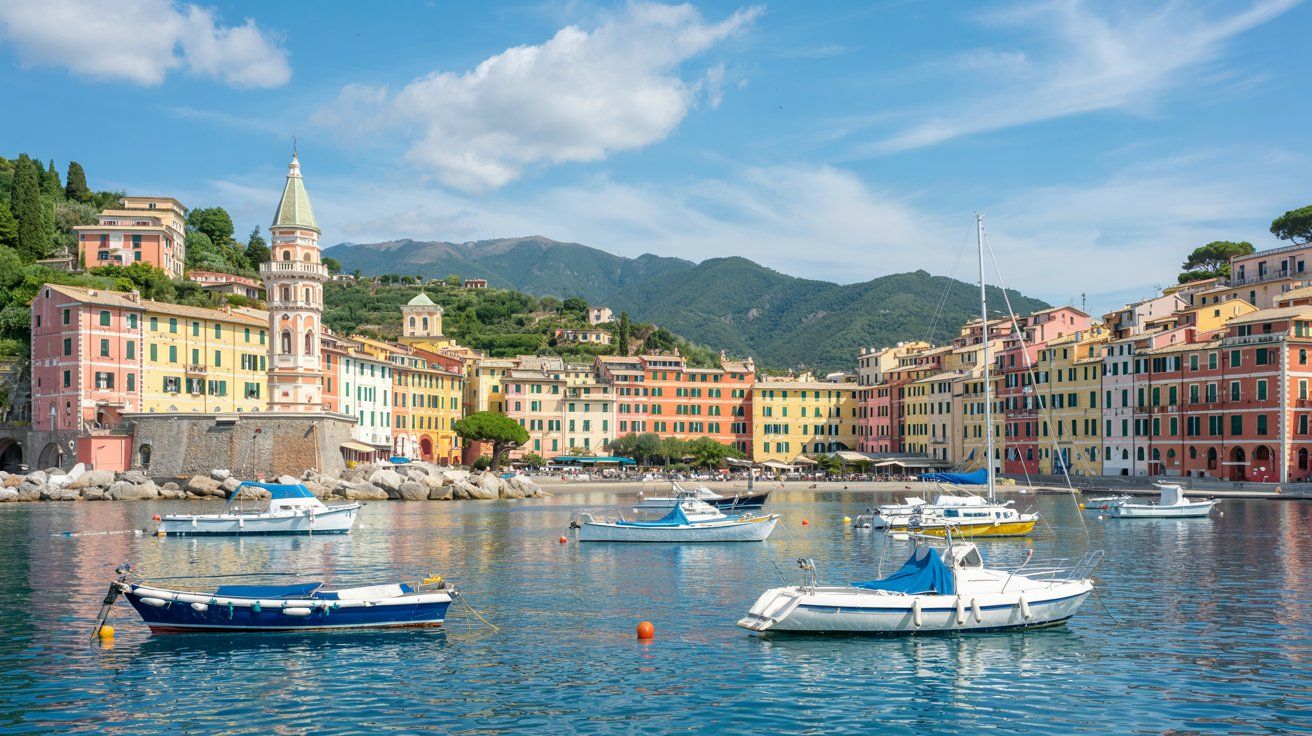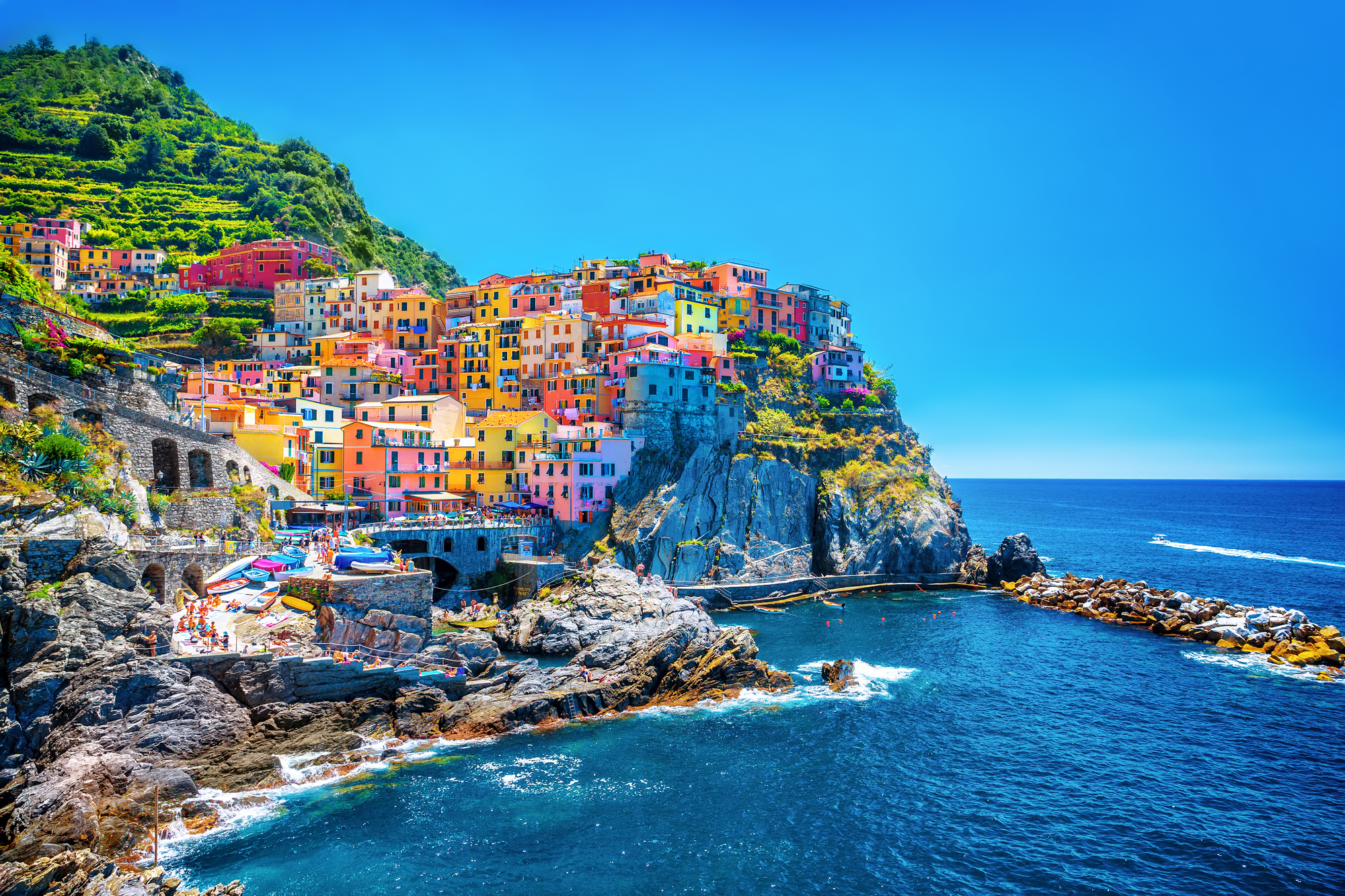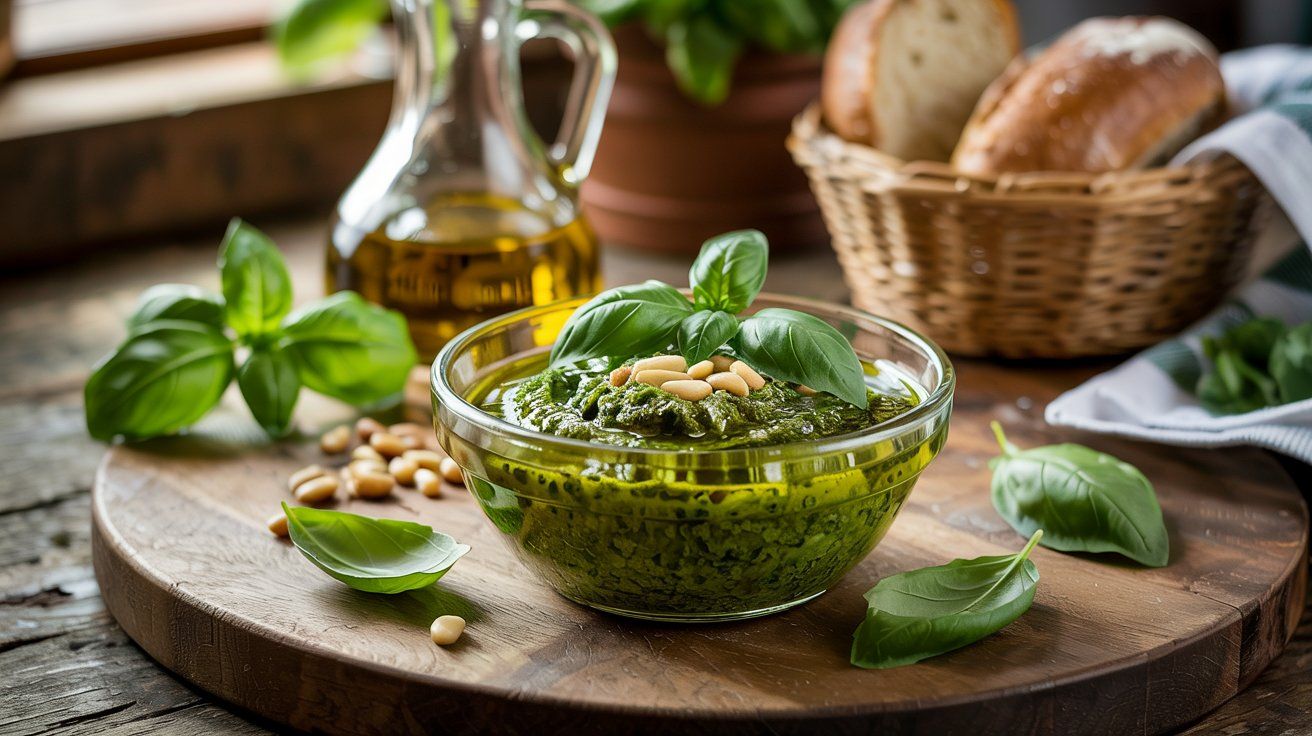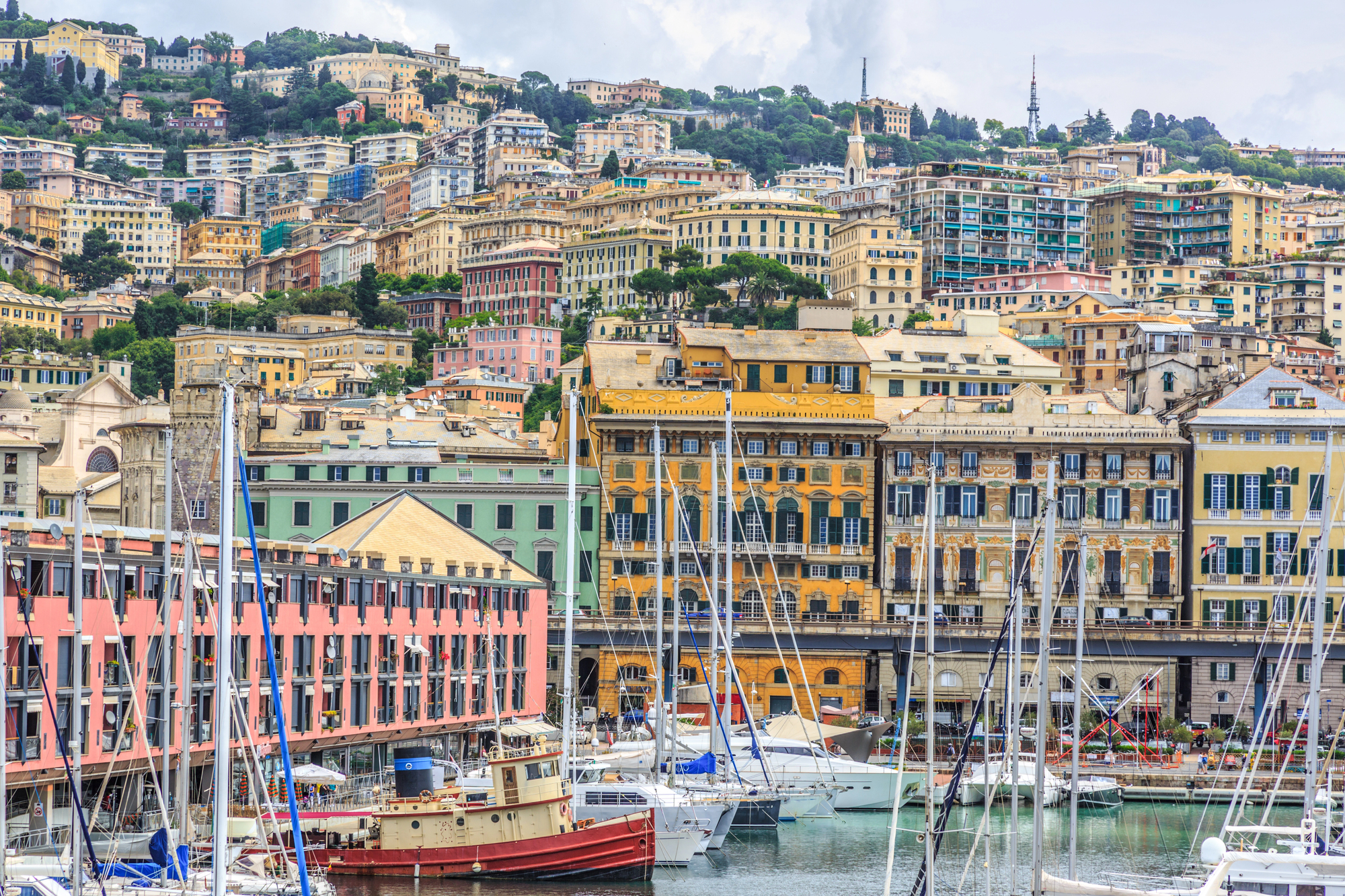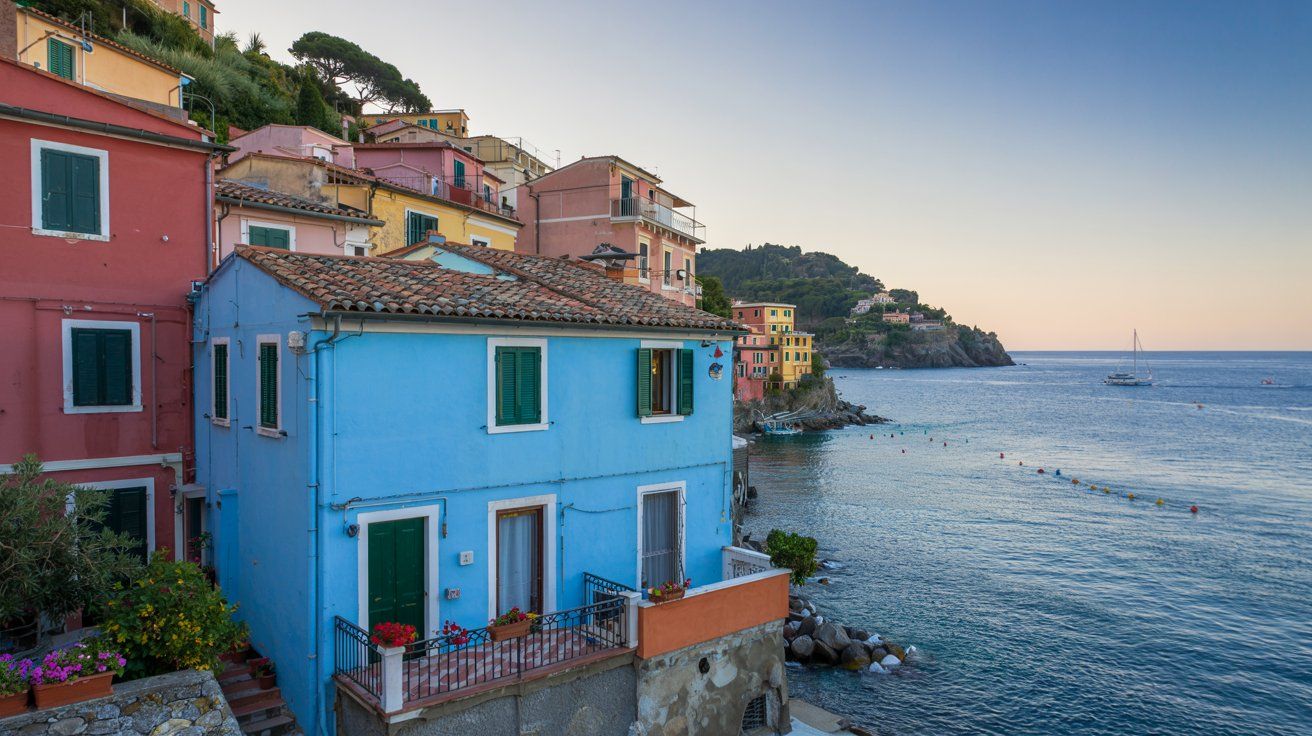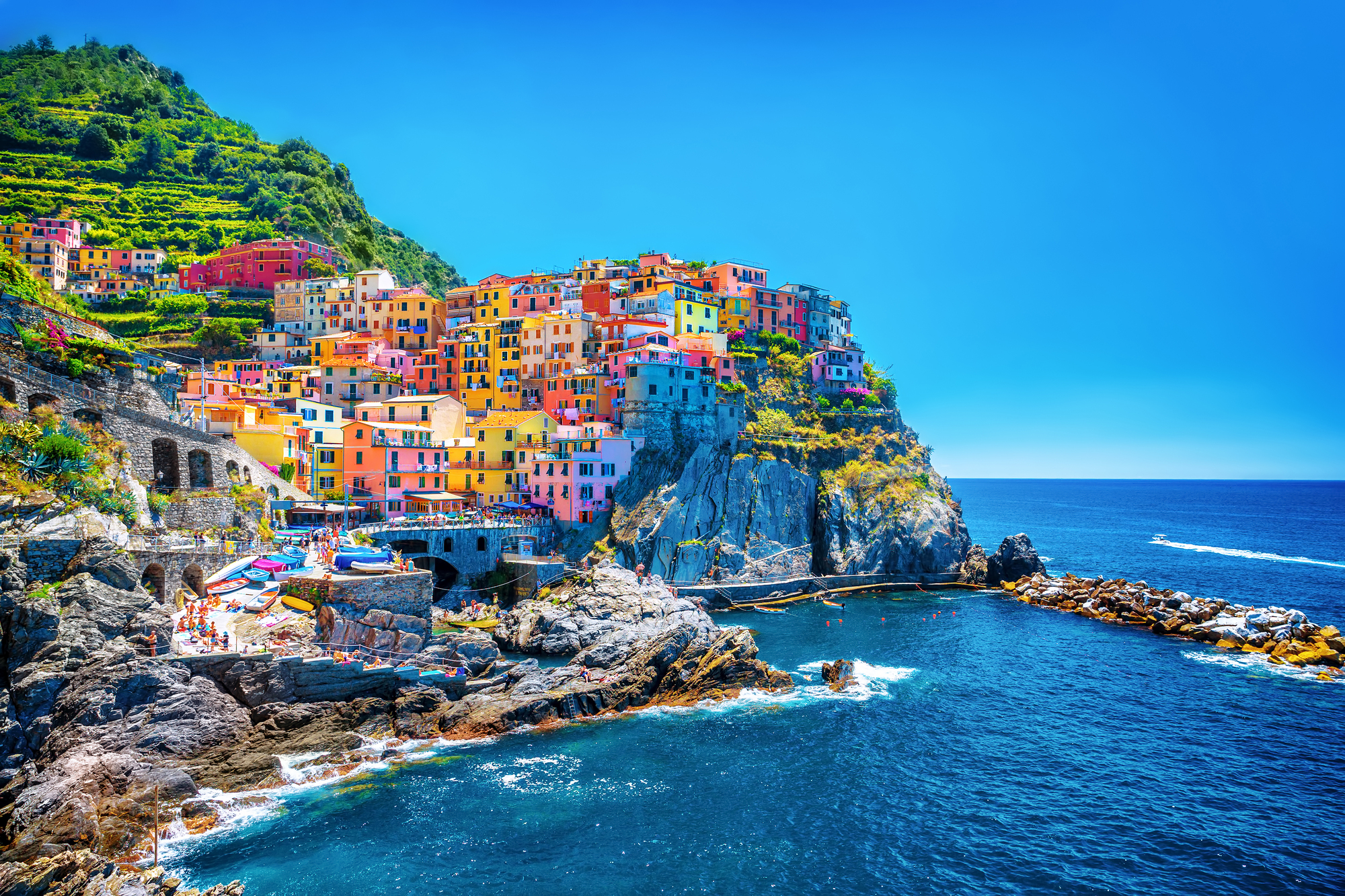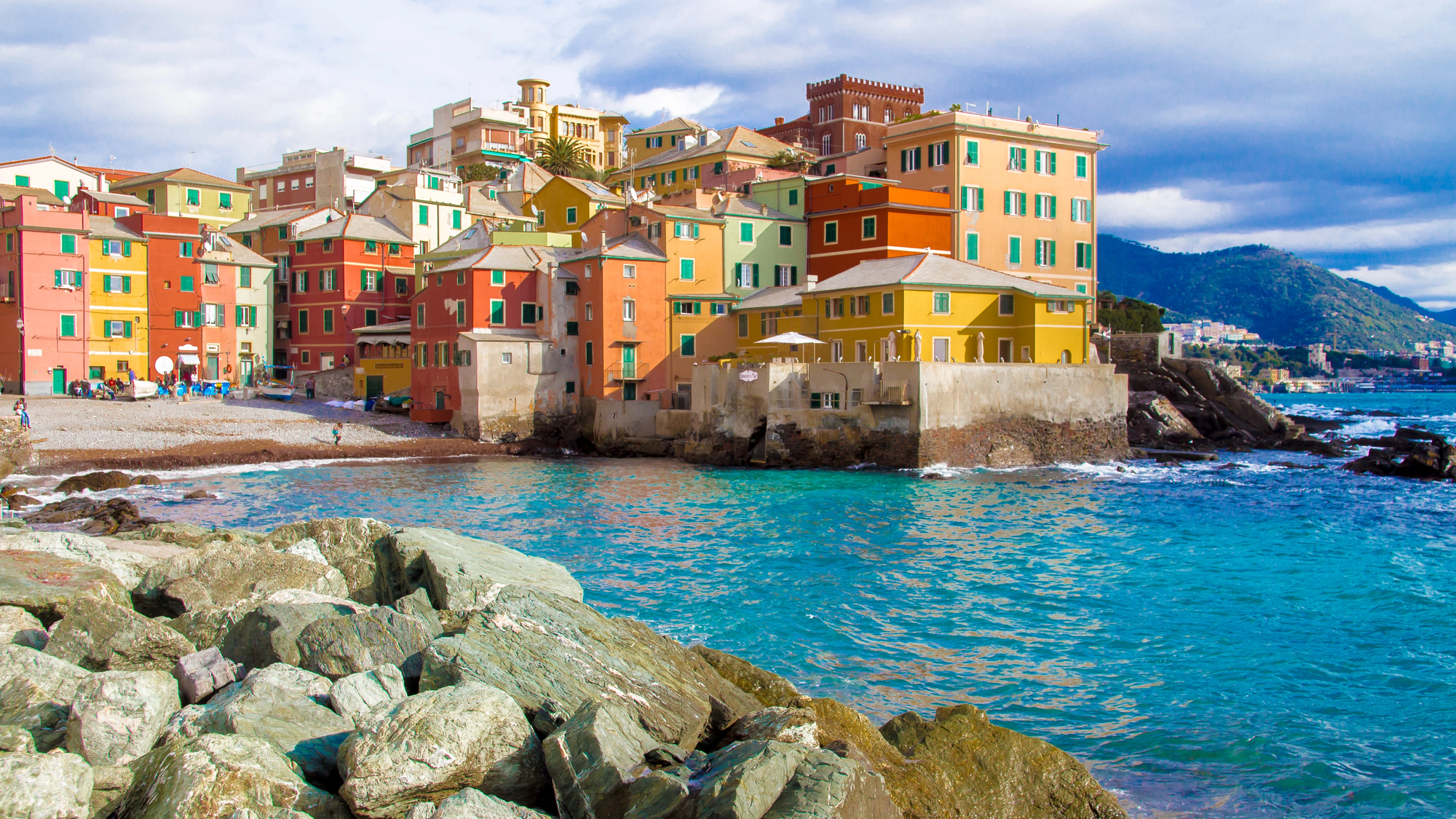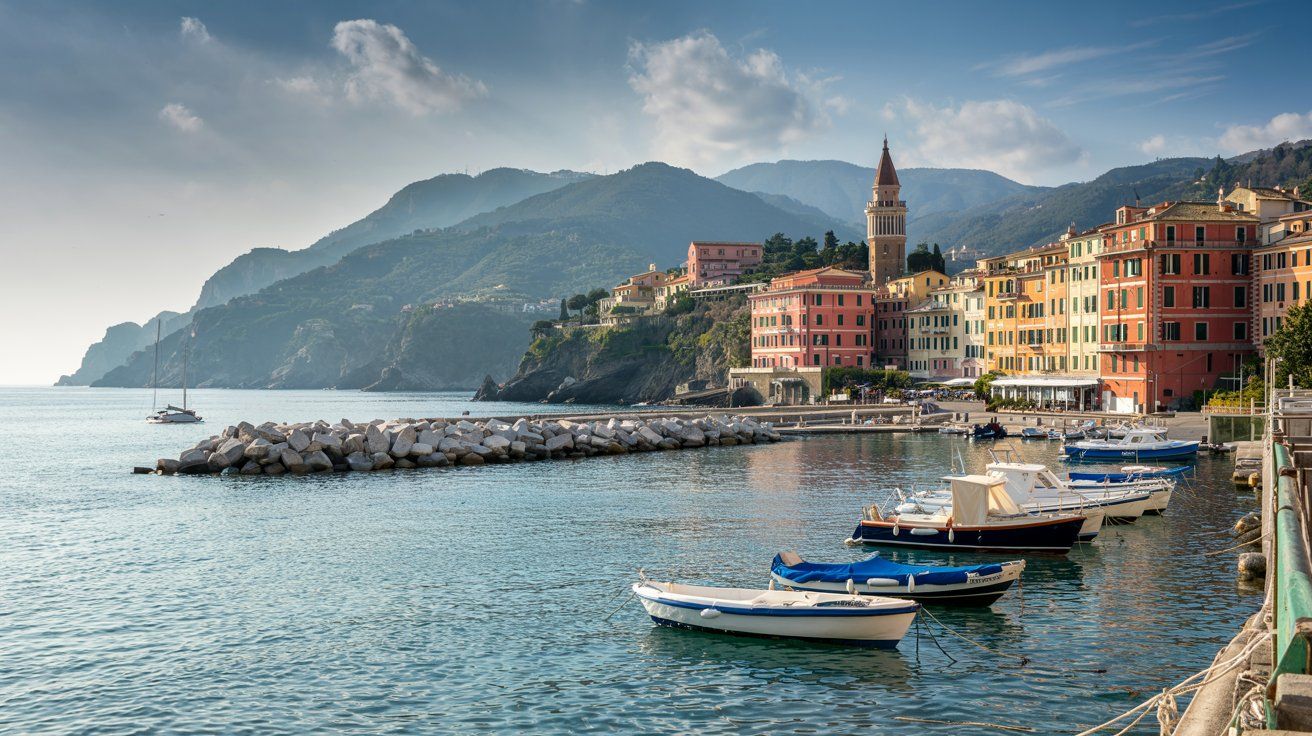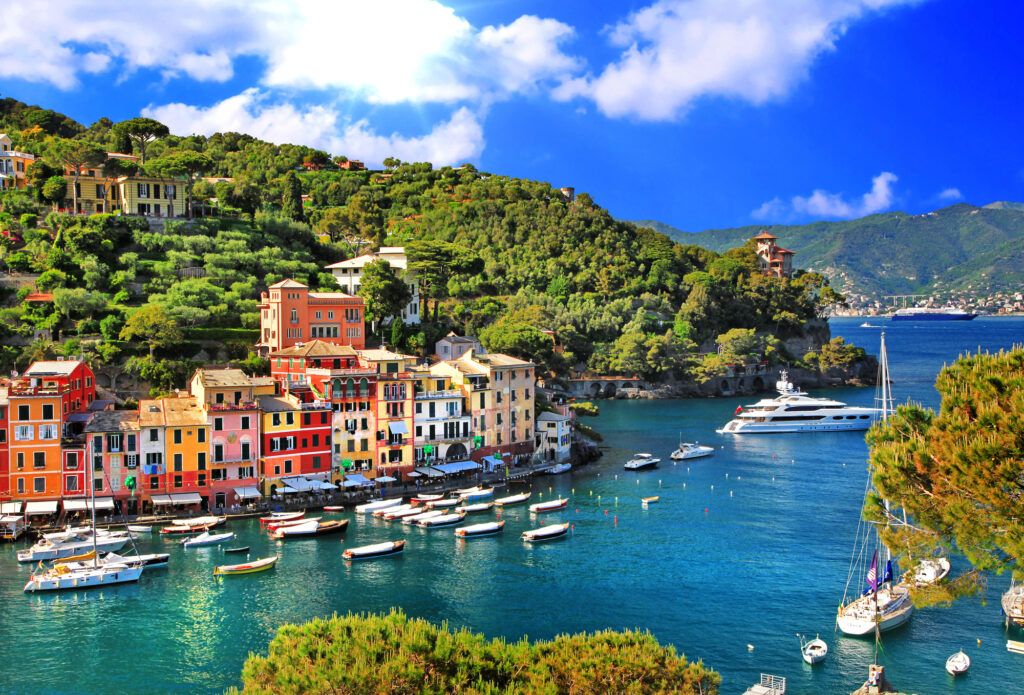You arrive on the Italian Riviera in late October, when the air is calm and the sea still clings to a bit of summer warmth. The crowds have thinned, and the pace feels more local—people going about their routines, shops just a little less hurried. This week, you get to explore the Riviera your way, mixing outdoor adventures with slow cultural moments.
You’ll wander cliffside trails, step into little harbors, and stroll historic streets that hint at the region’s layered past. Each stop draws you closer to Ligurian life, whether it’s through food or the ever-present sea. Let’s dive into the best ways to see, taste, and experience the Riviera from October 19 to 25, 2025.
Find available hotels and vacation homes instantly. No fees, best rates guaranteed!
Check Availability Now
1) Hiking the Cinque Terre trails
Walk the Cinque Terre’s coastal trails and you’ll link its five villages—Riomaggiore, Manarola, Corniglia, Vernazza, and Monterosso al Mare. These paths wind through vineyards and terraced hillsides, always with the Ligurian Sea in view.
The Sentiero Azzurro (Blue Trail) is the classic route, about 11 kilometers, connecting all the towns. Some stretches, like Riomaggiore to Manarola, are paved and easy. Others? Expect steep climbs—good shoes and a bit of fitness help.
Trail conditions can change, so check updates before you go. Tripadvisor notes that parts of the Via dell’Amore and Manarola–Corniglia sometimes close for repairs. Local park offices post daily updates.
If you’re after a quieter walk, try the hillside paths above Corniglia or between Vernazza and Monterosso—fewer people, cooler air. Mix up your hike with short train rides if you want to save time or dodge bad weather.
Pack water, sunblock, and some cash for trail passes. Early mornings? That’s when the light is best and the trails are nearly empty. It’s a good time to just soak in the views.
2) Exploring Portofino harbor
Portofino greets you after a twisty coastal drive or a ferry ride, and the harbor’s calm waters reflect pastel houses. Fishing boats and yachts share the inlet, blending a bit of local grit with understated elegance.
Stroll along Piazza Martiri dell’Olivetta, the main quay—cafés pour espresso, seafood smells drift from kitchens, and you can watch fishermen mend their nets. The harbor’s small, so you can take your time, maybe pause to watch boats come and go.
For a view, climb up to Castello Brown. It’s a short, 15-minute walk, but the panorama over the bay is worth it.
Or, follow the paved trail to the Portofino Lighthouse, surrounded by Mediterranean shrubs. There’s a quiet café up there—nice spot to catch your breath before heading back.
If you’d rather stay close to the water, browse the art galleries and shops around the harbor, highlighted on The Tourist Checklist’s Portofino guide. You’ll find a focus on local design and crafts.
3) Visiting San Fruttuoso Abbey
Getting to San Fruttuoso Abbey means taking a boat or hiking through Portofino Natural Park. Either way, the journey’s part of it—cliffs, blue water, a sense you’re leaving the busy world behind. Boats leave from Camogli, Portofino, and Santa Margherita Ligure, but it depends on the sea.
The abbey itself is tucked into a tiny cove, forest behind, sea in front. It’s a 10th-century Benedictine monastery, and the stone walls seem to hold centuries of stories. There’s a little beach out front, where people stop to rest or swim before visiting.
Inside, you’ll spot Romanesque arches and the tombs of the Doria family, a name woven deep into Genoa’s history. The atmosphere is peaceful, especially if you avoid the busiest times. Entry fees go toward keeping the abbey and trails in good shape.
For details on planning, routes, or boat schedules, see this complete guide to visiting San Fruttuoso Abbey or the travel guide to San Fruttuoso in Camogli.
4) Tasting Ligurian pesto in local trattorias
Try Ligurian pesto in a small trattoria—these family-run places make it with local basil, pine nuts, Parmigiano, and olive oil. The taste? It really depends on the freshness and whoever’s in the kitchen that day.
In Sestri Levante, you might find pesto made the old way, in a marble mortar, which gives it a smooth, rich flavor. You can even join a class to learn how it’s done—here’s one option in Sestri Levante.
Nearby Lavagna and Genoa have trattorias pairing pesto with trofie or trenette pasta. Those short, twisted noodles are perfect for holding the sauce. Sometimes you’ll get potatoes and green beans with it, which is very Ligurian.
Expect simple décor and friendly faces. Prices tend to be fair, especially outside the big tourist towns. If you want a taste of real Ligurian food culture, eating pesto where locals do is the way to go.
5) Boat tour along the Riviera coastline
Seeing the Riviera from the water is a whole different story. Boat tours give you front-row views of cliffs, pastel villages, and tucked-away coves. Most routes swing by Portofino, Santa Margherita Ligure, and the Cinque Terre—each with its own vibe.
From the sea, you notice how the villages cling to the hills. Some tours stop for swimming or let you wander little harbors. Operators listed on EuroAquaTours and Tripadvisor’s Italian Riviera cruises offer group or private options.
The weather can change fast, so check before booking. Autumn seas are usually gentle, but wind or rain can cancel trips. Bring a jacket and sunscreen—the sun bounces off the water even in October.
If you like things slow, try a sunset or half-day cruise. These often include a glass of local wine or some snacks. No big party—just a chance to take in the coastline’s calm, with the sea all around you.
6) Swimming at Monterosso al Mare beach
Monterosso al Mare’s main beach, Fegina, is the widest in the Cinque Terre. It’s steps from the train station and the water stays calm and clear—great for a swim, even late in the season. Families like it because the sand slopes gently into the sea.
For a quieter spot, head toward the old town. There’s a smaller beach that feels more local, especially if you come early. Rent an umbrella or just lay down your towel in the public area.
Elegant resorts, charming apartments, and vacation rentals with immediate confirmation. From Portofino to Cinque Terre, discover the most beautiful coastal towns of Liguria!
See Available Properties
Water in late October is still mild enough for a dip, though the air’s cooler and the crowds have faded. The beach stays clean, and nearby cafés are open for a coffee or a bite.
Monterosso stands out from the other villages with its sandy stretch—it’s just more comfortable than the rocky coves in Vernazza or Manarola. For more about the beach and local tips, check this detailed guide to Monterosso al Mare and Tripadvisor’s top attractions.
7) Wine tasting in Dolceacqua vineyards
Spend an afternoon around Dolceacqua, a medieval village wrapped in vineyards. The area’s known for Rossese di Dolceacqua, a light red wine—dry, balanced, with a subtle aroma. Local growers often invite visitors for tastings and walks.
You can join small-group tours through sites like Tripadvisor’s Dolceacqua wine experiences. Usually, you’ll visit the cellar, taste a few wines, and hear about old-school winemaking.
Drive from Sanremo or Ventimiglia, and you’ll get there in about half an hour. The roads are narrow but scenic, winding past olive groves and stone bridges. Parking’s a bit tight near the center, so expect a short walk.
The vibe is relaxed, especially this time of year. You can chat with producers, sample small-batch wines, and get a feel for how the climate shapes every vintage. It’s a slow, satisfying way to spend a day in the western Riviera.
8) Cycling the coastal road from Levanto to Bonassola
Pedal or walk the path linking Levanto and Bonassola—it’s a former railway line turned into a flat, car-free track for cyclists and walkers.
Most of the route passes through old train tunnels, which stay cool even when the sun’s out. Between tunnels, you get glimpses of cliffs and little beaches—good spots for a break. The bike path from Levanto to Bonassola is about 2.8 kilometers, and you can keep going toward Framura if you want more.
Bike rentals are easy to find near Levanto’s waterfront, and the path starts in the Vallesanta area. It’s well lit and marked, so families and casual riders won’t have trouble.
You’ll see more people in late mornings or on weekends. For peace and quiet, start early or go late in the day. It’s a simple, scenic way to get close to the Riviera’s natural beauty.
9) Discovering Genoa’s historic old town
Step into Genoa’s old town and you’re in a maze of narrow alleys—caruggi—squeezed between tall stone buildings. It’s one of Europe’s biggest historic centers, packed with little shops, family cafés, and tucked-away courtyards. You might lose track of time winding through these streets.
Begin near Porta Soprana, an old city gate, and walk toward Piazza de Ferrari. Noble palaces line the way—many are Palazzi Rolli, a UNESCO-listed group of Renaissance and Baroque homes.
Visit San Lorenzo Cathedral, where striped marble and dark stone show off centuries of history. The architecture is a blend, reflecting Genoa’s long connection to the sea. Discover Italian Riviera notes the district stretches from east to west, bounded by medieval gates.
The cobblestones are uneven and sometimes the crowds swell, especially around Via Garibaldi. But if you’re patient, the old town gives you real glimpses of daily life—locals chatting, laundry strung overhead, and the smell of fresh focaccia drifting from bakeries.
10) Shopping for ceramics in Albisola
Albisola Superiore’s ceramic tradition runs deep. Strolling through its old streets, you’ll spot artisan workshops and galleries that have been shaping and painting clay since the 16th century. Even now, many studios keep to those time-honored methods. Shop windows burst with hand-painted tiles, vases, and the classic blue-and-white tableware that just feels so Ligurian.
If you’re up for a scenic introduction, take a walk along the Artists’ Sea Promenade. Ceramic murals line the path, linking Albisola Superiore to Savona. It’s a breezy stroll—sometimes you’ll catch glimpses of both modern and centuries-old designs side by side. Some workshops actually let you peek in while artisans spin their magic, shaping raw clay into something beautiful.
Looking for a more hands-on spot? Try Il Ceramista in Piazza dell’Elce. It’s a cozy little shop where you might catch a demonstration or chat with artists. If you want to map out your route, the ceramic ateliers listed by Albisola Turismo can help you plan.
Prices? They’re all over the place. You’ll find affordable souvenirs and high-end collector pieces—something for most budgets. A quick tip: not every studio takes cards, so it’s smart to have some cash on hand.
Easy booking across stunning accommodations from historic hotels to modern retreats. Pastel-colored buildings and crystal waters create the perfect Mediterranean escape!
Secure Your Italian Getaway
Travel Tips for Visiting the Italian Riviera in October
October on the Ligurian coast feels refreshingly calm. The weather’s mild, the crowds thin out, and you’ll stumble upon food festivals tucked into villages. If you pack smart and figure out how to hop between towns, it’s a pretty easy time to explore.
Weather and Packing Essentials
During the day, temperatures usually sit between 16°C and 22°C (60°F to 72°F), dipping to about 12°C (54°F) at night. Rain sometimes rolls in, especially toward the end of the month, so a light waterproof jacket and comfortable walking shoes with good grip are musts for those slick cobblestones or muddy trails.
Layering? Absolutely. A short-sleeve shirt, a light sweater, and a medium-weight jacket should cover most situations. Toss in a compact umbrella and go for quick-drying clothes if you can.
Planning to hike in Cinque Terre? Bring a reusable water bottle and a small backpack. Trails sometimes close after heavy rain—worth checking local updates before you lace up.
Evenings can lean a bit dressy, especially if you’re heading out to eat. Locals keep it understated—leave the beachwear for, well, the beach.
| Item | Purpose |
|---|---|
| Waterproof jacket | Protection from coastal rain |
| Layered clothing | Adjust to temperature shifts |
| Walking shoes | Comfort on uneven terrain |
| Umbrella | Sudden showers |
| Light scarf | Wind protection |
Navigating Local Transportation
Regional trains link up most Riviera towns—Genoa, Portofino, Cinque Terre, you name it. Grab tickets at the station or online, and remember to validate before hopping on. Trains run pretty often, but weekends or maintenance days can slow things down.
Buses cover the villages that trains skip. They’re reliable enough, just not super frequent, so check schedules ahead. Renting a small car gives you more freedom, though parking in those old town centers can be a headache.
Ferries run along the coast until late October. They’re a relaxed way to get around, plus you’ll dodge the crowds. Tripadvisor’s Italian Riviera attractions page has up-to-date info on routes and seasonal changes.
Taxis turn up in bigger towns, but long rides add up fast. Honestly, walking is often the simplest way to see these compact spots.
Cultural Events and Festivals
October’s all about harvest traditions. Towns throw olive oil tastings, wine fairs, and seafood markets as summer winds down. In Liguria, you’ll see plenty of events celebrating pesto, focaccia, anchovies, and other local favorites.
Some festivals barely make it online—you’ll find them on community boards or by asking around. The Discover Italian Riviera guide points out that autumn’s quieter vibe makes it easier to meet locals and artisans.
Music and art don’t stop for the season. Genoa and La Spezia keep up a steady calendar of performances and exhibits, often free or cheap, usually in public squares or old churches.
Bring some cash for these smaller venues. If you want a seat, show up early. And if you’re heading to a cultural or religious event, dressing modestly is a good call.
Dining and Culinary Experiences
The Italian Riviera’s food scene is a real treat—think local recipes, seasonal produce, and wines that tell you exactly where you are. Whether you’re in a fishing village or tucked inland, you’ll taste the region’s mix of sea and countryside.
Seasonal Italian Riviera Dishes
Autumn menus get heartier. Expect mushroom risotto, pumpkin ravioli, and fresh anchovies straight off the boats. Genoa and Portofino restaurants love to show off pesto alla Genovese—fresh basil and olive oil make all the difference. If you’re in Genoa, Pasta alla Genovese at Sà Pesta is a local classic. Journey Magazine Asia swears by its simple, balanced flavors.
Don’t miss focaccia di Recco—thin, cheesy, and best eaten warm. Markets in Chiavari and La Spezia tempt you with olive tapenade, salted anchovies, and freshly pressed olive oil. Local trattorias keep prices reasonable, but if you’re after something fancy, The Cook in Genoa (chef Ivano Ricchebono’s place) delivers a refined experience, as Wanderlog points out.
Wine Tasting Opportunities
Liguria’s vineyards don’t make a ton of wine, but what they do produce is usually excellent. Want to try a crisp white? Go for Vermentino in seaside spots like Levanto or Cinque Terre. The terraced hills don’t leave much room for huge harvests, so tastings here tend to feel relaxed—sometimes even a bit intimate.
Thinking about a guided experience? You might want to look at the food and drink tours on Tripadvisor. These tours usually mix winery stops with local dishes, so you get a taste of both the wine and the food scene.
Prefer to do your own thing? Duck into a small enoteca in Rapallo or Finale Ligure. You can order regional wines by the glass, and the staff will probably have a few opinions about what to pair—maybe a plate of bruschetta with olive oil or some aged pecorino.
From seaside palazzos to hillside villas, find your perfect stay along this stunning stretch of Mediterranean coastline. Instant booking with best price guarantee!
Browse Accommodations Now

